Black-samson Echinacea, also known as Coneflower or Narrow Leaf Purple Coneflower, is a hardy perennial native to North America. Belonging to the Asteraceae family, this wildflower is prized for its vibrant purple petals and resilient nature. Typically grown as an ornamental plant, cultivated varieties often exhibit a more polished appearance compared to their wild counterparts, which face competition in natural habitats.
In addition to its aesthetic appeal, Black-samson Echinacea is sometimes cultivated for its essential oils, adding another layer of value to this versatile plant. Its long-lasting blooms and ability to thrive in diverse conditions make it a popular choice for gardeners looking to enhance their landscapes with a touch of wild beauty.
| Common name | Black-samson Echinacea, Coneflower, Narrow Leaf Purple Coneflower |
| Botanical name | Echinacea angustifolia |
| Family | Asteraceae |
| Species | angustifolia |
| Origin | North America |
| Life cycle | Perennial |
| Plant type | Herbaceous Perennial |
| Hardiness zone | 3, 4, 5, 6, 7, 8 |
| Sunlight | Full Sun |
| Maintenance | Low |
| Soil condition | Clay |
| Soil ph | Acid |
| Drainage | Well-Drained |
| Growth rate | Medium |
| Flowering period | Summer |
| Height | 1 ft. – 2 ft. |
| Flower color | Pink |
| Leaf color | Green |
| Stem color | Green |
| Fruit type | Achene |
| Flower benefit | Good Cut |
| Garden style | Butterfly Garden |
| Uses | Meadow |
I. Appearance and Characteristics
Echinacea angustifolia, the narrow-leaved purple coneflower or blacksamson echinacea, is a species of flowering plant in the family Asteraceae. It is native to North America, where it is widespread across much of the Great Plains of central Canada and the central United States, with additional populations in surrounding regions.
The word “Echinacea” is derived from the Greek word “echinos” which means sea urchin or hedgehog; a feature that can be observed in the flower head of the plant.
E. angustifolia is a perennial herb with spindle-shaped taproots that are often branched. The stems and leaves are moderately to densely hairy.
The plant consists of white to pink or deep purple flower petals that characteristically wilt downwards, while the ray florets of the flower head range from green to red-brown in color. The leaves are dark green and can be oblong-lanceolate or elliptical in shape. The plant has pubescent stems with rhizomes present underground.
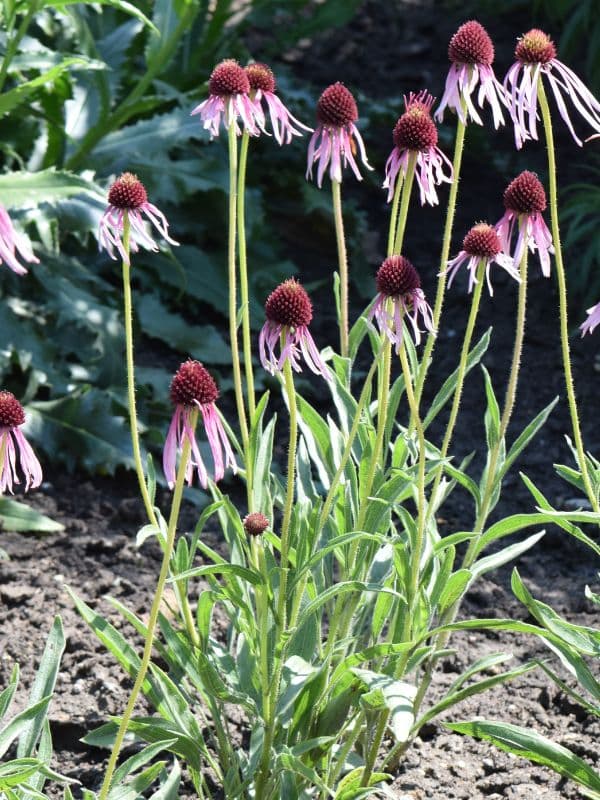
Echinacea angustifolia blooms in late spring to mid-summer. Two subspecies are used by some botanists, but are regarded as illegitimate by Flora of North America (FNA) and Plants of the World Online (POWO):
- Echinacea angustifolia subsp. angustifolia is native to central Canada and the central United States from Saskatchewan and Manitoba in the north to New Mexico, Texas, and Louisiana in the south.
- Echinacea angustifolia subsp. strigosa has a more limited range in Kansas, Oklahoma, Texas, and Louisiana.
The plant does not self pollinate and requires assistance from bee pollinators in the reproduction process. In Echinacea angustifolia there is greater success in pollination between mates that are at a closer proximity between one another. Echinacea angustifolia is an herbaceous perennial plant, producing flowers and living more than two years at a time. The plant is known to grow at a slow rate and is drought-resistant to help the plant survive in its temperate grassland habitat.
II. How to Grow and Care
Sunlight
Blacksamson echinacea are long-day plants, preferring plenty of sunlight. During blooming, 14-16 hours of sunlight per day should be ensured for 7-8 weeks. For optimum posture and a maximum number of flowers, blacksamson echinacea should be planted in a place with at least 5 hours of full sun per day. The plant can adapt to partially-shaded environments, but the stem posture may become twisted in the search for adequate sunlight.
Temperature
Blacksamson echinacea thrive in hot and dry climates and adapt to various temperatures and humidity fluctuations. The plant does not perform well in very humid climates or in rainy areas with wet soil. In colder areas, it should be protected during winter during its first year. For better growth, maintain temperatures of about 16 to 24 ℃ during the day, and about 10 to 16 ℃ at night. High temperatures, preferably 21 to 24 ℃, are required for germination. It can germinate after 2-4 days.
Watering
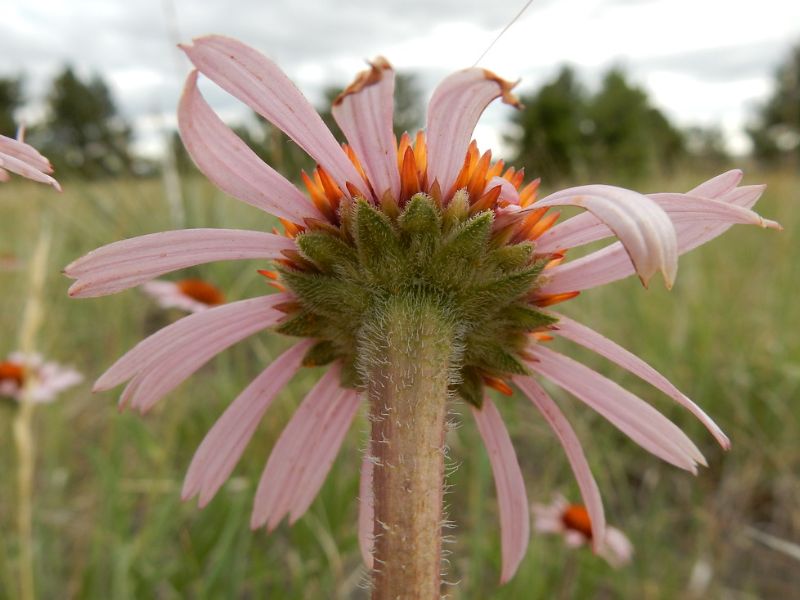
Originating from the prairies of North America, blacksamson echinacea is accustomed to periodic droughts and thrives in well-drained soils. Its deep taproot allows it to access moisture during dry spells, making it relatively drought-tolerant. For optimal growth, blacksamson echinacea prefers watering every week. As a perennial herb that’s often grown outdoors, blacksamson echinacea’s water needs are influenced by its ability to withstand cooler temperatures, which reduces its irrigation requirements outside of the growing season.
Soil
Blacksamson echinacea planted in gardens prefer fertile, well-drained, neutral, sandy soil with a suitable pH value of 6.5-7.0. With fewer soil requirements than other plants, they can thrive in a variety of soil types, including rock and clay soil. However, blacksamson echinacea do not like humid or silty soil and grow best on fertile soil rich in humus.
Fertilizing
To support robust growth and bloom in blacksamson echinacea, apply balanced nutrition fertilizers in spring as new growth appears. Upon budding, switch to high phosphorus fertilizers to encourage flowering. Fertilize monthly, using label-recommended quantities, tailoring amounts for smaller plants. Over-fertilization risks harmful nutrient buildup, so proceed cautiously, reducing application frequency in dormant winter months.
Utilize slow-release granules or liquid fertilizers, ensuring even distribution and soil integration for optimal uptake without root burn. Adequate fertilization maximizes plant vigor and bloom production in black salmon echinacea.
Planting Instructions
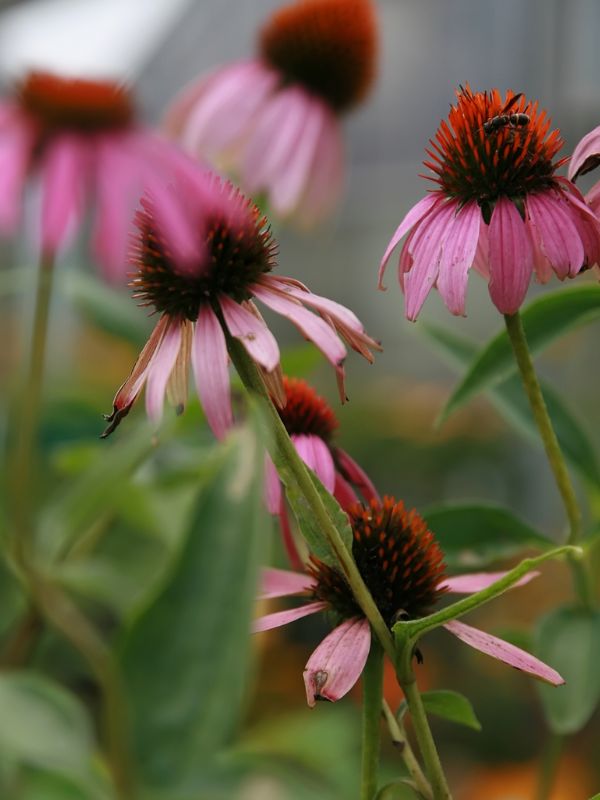
It is generally recommended to sow seeds in spring or autumn. Soak seeds in warm water for 20-30 min before sowing, then place them in hot water at 55 to 60 ℃. Maintain this water
temperature for 10-15 min. Then, add cool water to drop the temperature to 25 to 30 °C, and soak seeds for 8-10 hours. This speeds up seed germination and disinfects them.
Select well-drained and air-permeable soil, and apply a layer of fertilizer to it in advance. Before sowing the seeds, mix them well with a small amount of fine soil, and drop them evenly on the fertilized soil. Cover them with a layer of soil and slowly water them until it is sufficiently wet. Irrigate with a small amount of water so as not to flood the seeds together to prevent an uneven distribution of seedlings. The seedlings of black salmon echinacea will usually break out of the soil about 8 days later.
When the temperature is maintained at 22 ℃, the seedlings grow up in about 15 days., When three branches grow out of the seedlings, and they are about 10 cm tall, the dense seedlings can be transplanted into individual flowerpots. Use 15 to 15 cm flowerpots and put one seedling in each pot. Make a culture soil by mixing 1/3 organic fertilizer, 1/3 garden soil, and 1/3 sand. After the seedlings are all transplanted to flowerpots, the soil should be compacted and watered sufficiently and flowerpots should be placed in cool places. 7-10 days later, move black salmon echinacea to places withsunlight so they can grow normally.
Pruning
Pruning black salmon echinacea in spring will make them denser and bloom for a longer period of time. Removing deadheads and dead leaves is the main goal of pruning. Removing deadheads will help the plant bloom throughout the summer, and each flower will last for weeks. The flowers will begin to bloom from the top of the stem, and more lateral branches and buds will form along the stem as the first flowers at the stem tip wither.
Propagation
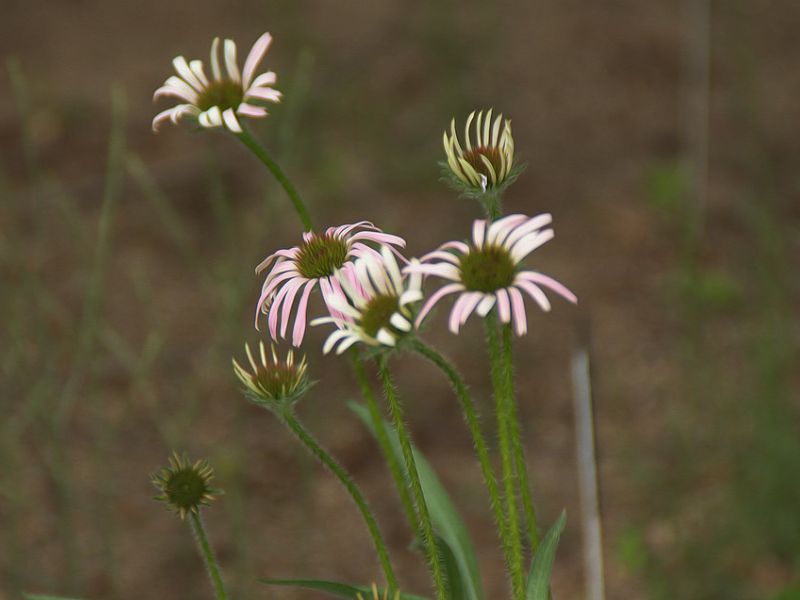
Blacksamson echinacea can be propagated by sowing or cutting. Refer to the above text for the sowing method. For cutting, cut a branch about 5 cm long in spring, and retain 2-4 leaves. Remove the branch tip, cut under the node, and insert it into the soil immediately after cutting. Alternatively, you can divide the plant in spring and autumn. Separate it from the rhizome with a knife, and divide it into several plants. On average, you can leave each plant with 4-5 small buds and plant them in prepared soil.
Transplanting
Blacksamson echinacea thrives when transplanted in spring to early summer, as this period supports root development. Choice of location should offer full sun, well-drained soil, and ample space. Occasional watering after the transfer encourages quick establishment.
Repotting
Repot black samson echinacea every 2-3 years, coinciding with spring to encourage vigorous growth. As a bushy perennial, it requires a larger pot to accommodate deep roots. Opt for a container 2 inches wider than the current one to ensure space for expansion. Post-repotting, keep black samson echinacea in indirect sunlight and maintain consistent moisture without waterlogging. These steps will aid black samson echinacea in recovering and thriving post-transplant.
III. Harvesting and Storage
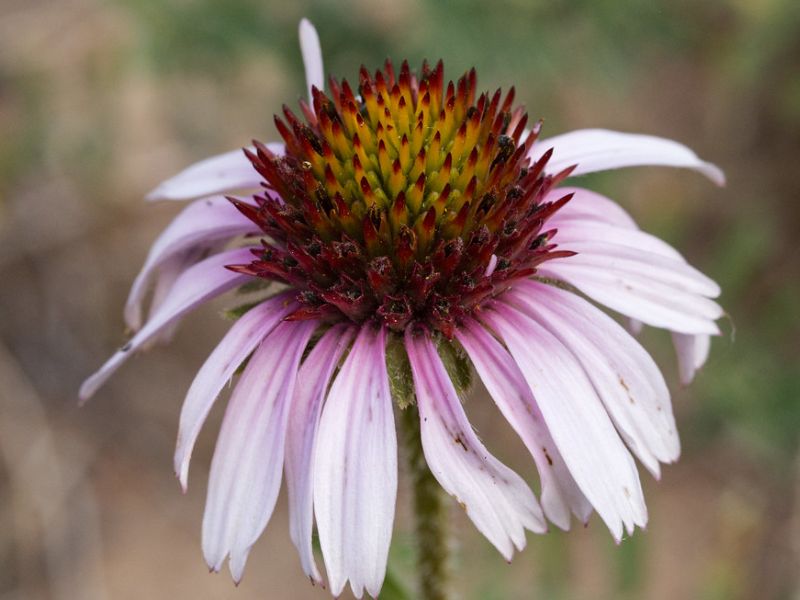
Blacksamson echinacea that grow from seeds usually bloom in the second year. When the buds begin to bloom, they can be harvested. The stem should be cut with sharp scissors from the bottom set of leaves. Remove the leaves from the stem after harvesting and remove the extra buds behind the flower heads to avoid excessive consumption of nutrients and water.
Find Where to Buy the Best Narrow Leaf Purple Coneflower (Echinacea angustifolia)
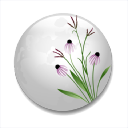


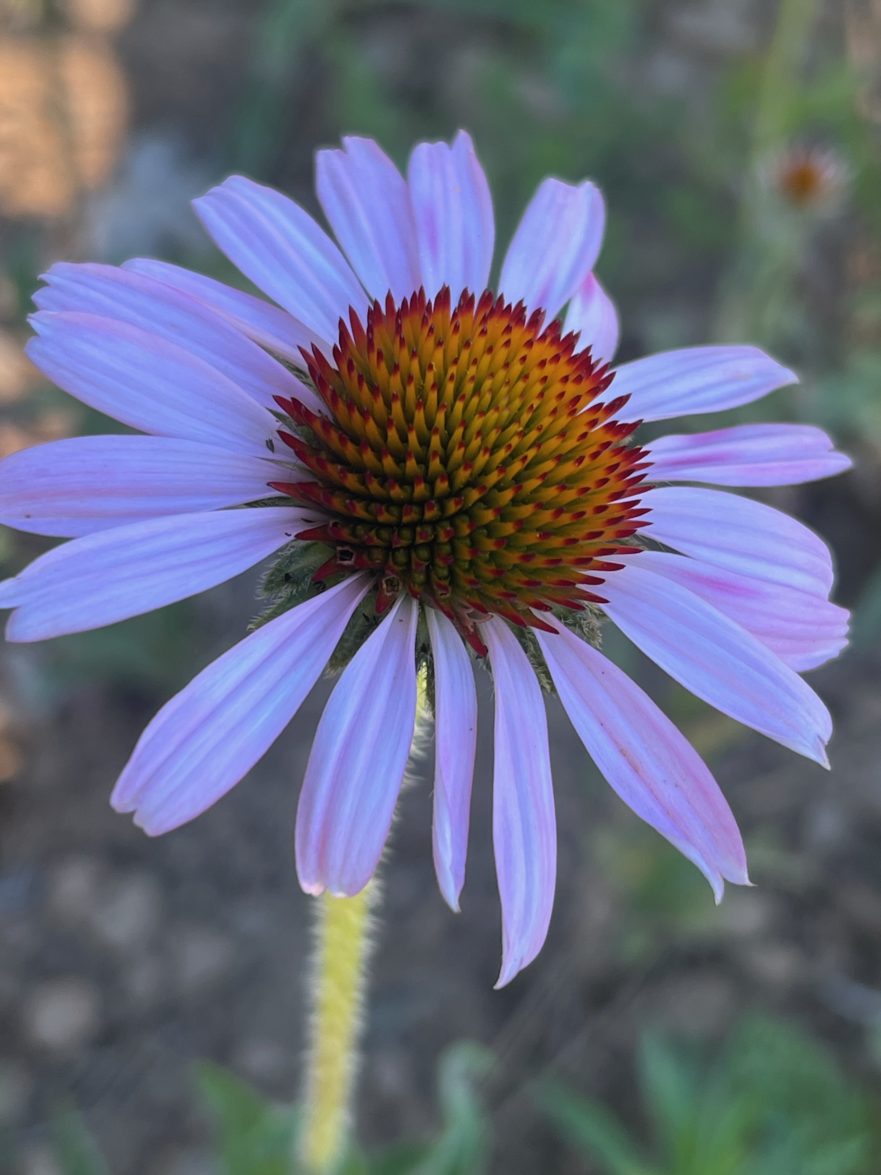

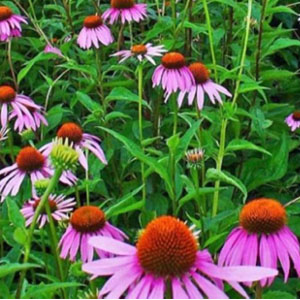
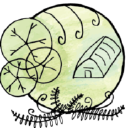
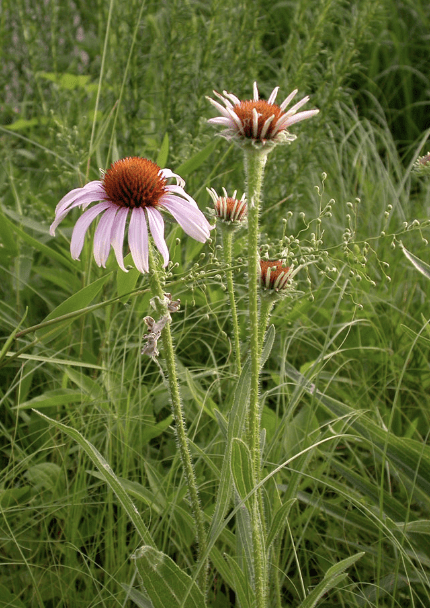










Leave a Reply